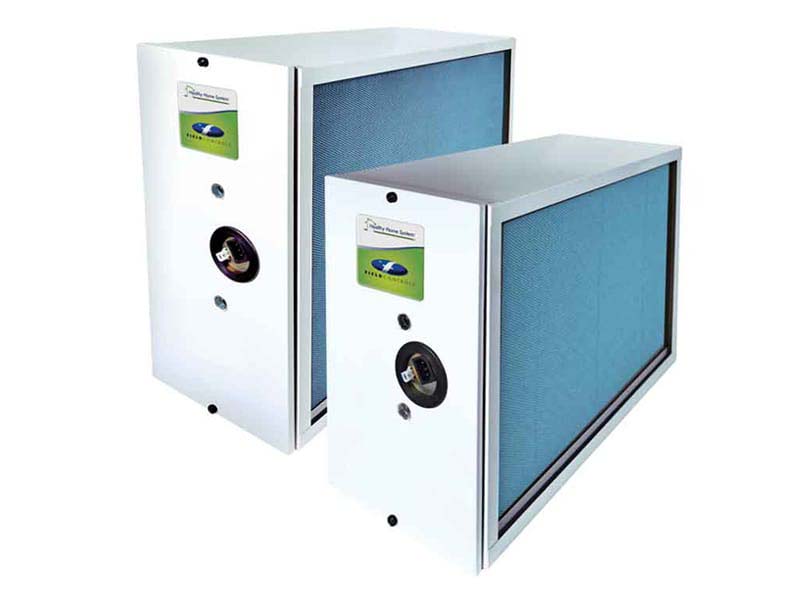
Achieving clean air in commercial facilities is often difficult because of the number and variety of people that may be inside at any given time. Even before the COVID-19 pandemic, mold, allergens, bacteria, viruses, and volatile organic compounds were a problem for indoor air quality. Now, the need for commercial air purification systems is only greater. Luckily, there are a variety of new technologies available that can keep indoor air clean and free of harmful substances.
Types of Commercial Air Purification Systems
In decades past, there have been few options to ensure high levels of indoor air quality. Of course, filters have been around for quite a while and basic technologies existed for recycling and cleaning air in commercial facilities. However, only recently has such a large emphasis been placed on the importance of these systems.
If the COVID-19 pandemic has influenced one thing, it’s the acceleration of trends across workplace strategy and technology. One of these trends is the implementation of advanced commercial air purification systems in retail outlets, commercial offices, airports, and other high traffic commercial facilities.
As employees go back to work, the holiday season approaches, and infection counts begin to rise, the necessity of effective air purification is thrown into sharp relief. With that in mind, React Industries is installing the most effective purification technologies available today. The Trio-1200 System from Feld Controls is helping facilities achieve the highest quality indoor air while keeping occupants safe from harmful contaminants, including SARS-CoV-2, the virus that causes COVID-19.
Commercial Air Filtration Systems
The first stage in the purification process involves MERV 13 high-efficiency filters that are designed to capture particles as small as .3 microns. These particles include mold, bacteria, dust, dander, and pollen.
Though these contaminants are not making headlines these days, they can be some of the most disruptive to productivity. The long term health risks, not to mention the immediate loss in productivity caused by allergens, means that an MERV 13 filter actually can have monetary and productivity benefits for your business.
It’s also important to note that, while high-efficiency filtration is removing all but the smallest particles, it’s not interfering with the efficiency of your overall HVAC system. In fact, clean air in your facility actually improves the lifespan of your equipment.
Two Types of Direct Purification
UVC Lighting
The next stage in the process involves UVC-generating lamps being installed inside air ducts and near AC coils. As air circulates through your facility—up to 150 times per day depending on your system—harmful microbes are deactivated and prevented from replicating. This substantially reduces the risk of transmission of infection.
When installed near AC coils, UVC light can actually prevent the buildup of organic materials and biofilm on the coil surface. The buildup causes your equipment to operate less efficiently and, over time, will result in a shorter lifespan.
Photo-Reactive Oxidation
The final stage in the Trio-1200 system is Field Controls’s PRO-Cell panel that eliminates toxic volatile organic compounds (VOC) and converts them into water vapor and carbon dioxide. The result is odorless air that is safe and healthy to breathe. When viruses, VOCs, and fungi come into contact with a patented aluminum honeycomb cell and are then exposed to UVC light, the process of photo-reactive oxidation occurs. Not dissimilar from a catalytic converter in your car, this proven technology eliminates harmful pollutants.
The air is finally passed through a carbon filter to further reduce any remaining odor and is then recirculated back through your facility.
When multiple filtration and purification technologies are used together, the result is clean air that keeps occupants safe, healthy, and productive.
Other Methods of Purification
React Industries is also installing other commercial air filtration technologies, including equipment that uses bipolar ionization to deactivate viruses and other airborne contaminants. This technology works by creating negative ions in the air which then bind to the spike proteins on the exterior of coronaviruses.
By now, many of us have seen pictures of the defining characteristic of all coronaviruses. The spikes surrounding a spherical body. By binding to these spikes, the mechanism for the virus to attack cells is disabled, preventing transmission.
With such a wide variety of air purification technology out there for businesses to use in their facilities, it is important to work with an HVAC partner like React who can find the ideal solution. Contact us today to get started on keeping your facility safe.